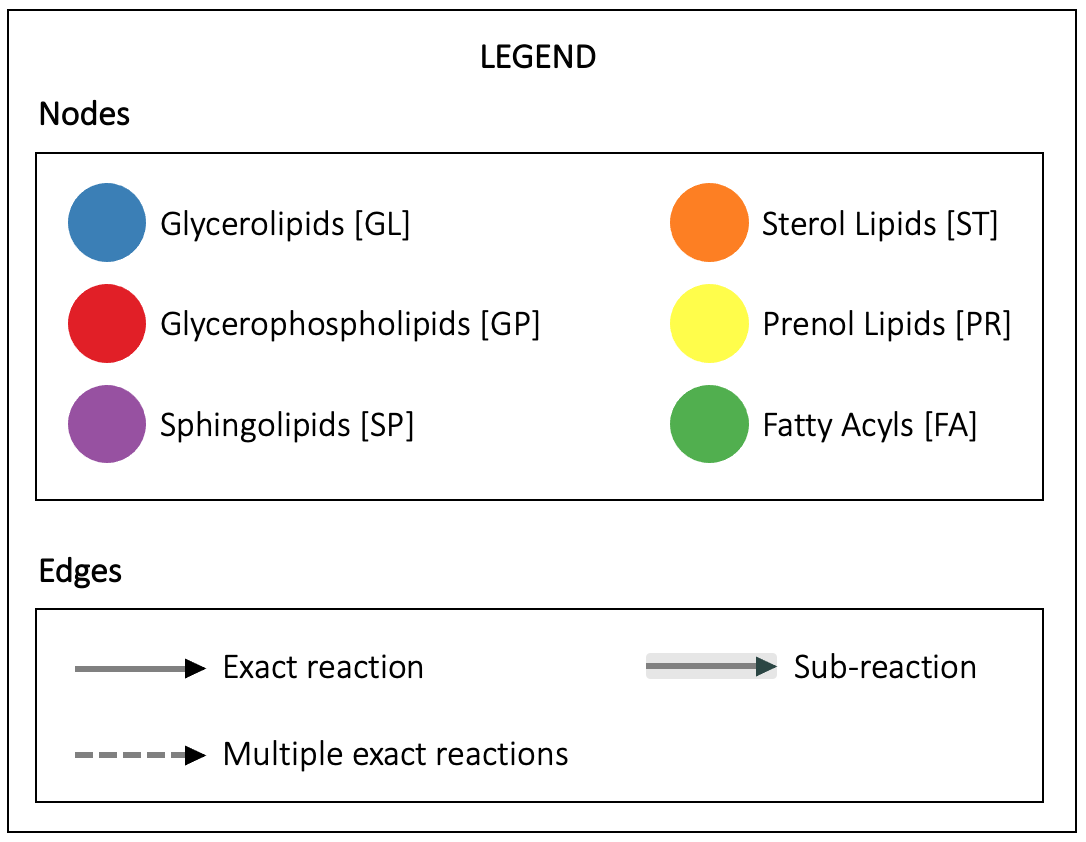Structure Database (LMSD)
Common Name
Palmitic acid
Systematic Name
hexadecanoic acid
Synonyms
- Cetylic acid
- Palmitate
- n-Hexadecanoic acid
- C16:0
- Aethalic acid
3D model of Palmitic acid
Please note: Where there are chiral atoms but the stereochemistry is undefined, the 3D model takes an arbitrary conformation
Classification
Category
Main Class
Sub Class
Biological Context
Palmitic acid is a long-chain saturated fatty acid that comprises approximately 25 and 65% of human total plasma lipids and saturated fatty acids, respectively.1,2 Acylation of palmitic acid to proteins facilitates anchoring of membrane-bound proteins to the lipid bilayer and trafficking of intracellular proteins, promotes protein-vesicle interactions, and regulates various G protein-coupled receptor functions.1 Palmitic acid (200 µM) increases NF-ĸB p65 levels, matrix metalloproteinase-9 (MMP-9) activity, and production of reactive oxygen species (ROS) in AsPC-1 pancreatic cancer cells, as well as increases migration of AsPC-1 cells.3 It increases COX-2 levels in RAW 264.7 cells and increases LPS-induced IL-1β levels and caspase-1 activity in isolated mouse peritoneal macrophages.4,5 Dietary administration of palmitic acid (2.2% w/w for 12 weeks) increases mouse hippocampal β-secretase 1 (BACE1) activity and amyloid β (1-42) (Aβ42) levels.6 It also induces systolic contractile dysfunction in isolated mouse hearts.7 Red blood cell palmitic acid levels are increased in patients with metabolic syndrome compared to patients without metabolic syndrome and are also increased in the plasma of patients with type 2 diabetes compared to individuals without diabetes.8,9 Palmitic acid MaxSpec® standard is a quantitative grade standard of palmitic acid that has been prepared specifically for mass spectrometry and related applications where quantitative reproducibility is required. The solution has been prepared gravimetrically and is supplied in a deactivated glass ampule sealed under argon. The concentration was verified by comparison to an independently prepared calibration standard. This palmitic acid MaxSpec® standard is guaranteed to meet identity, purity, stability, and concentration specifications and is provided with a batch-specific certificate of analysis. Ongoing stability testing is performed to ensure the concentration remains accurate throughout the shelf life of the product. Note: The amount of solution added to the vial is in excess of the listed amount. Therefore, it is necessary to accurately measure volumes for preparation of calibration standards. Follow recommended storage and handling conditions to maintain product quality.
This information has been provided by Cayman Chemical
References
2. Lee, J.Y., Sohn, K.H., Rhee, S.H., et al. Saturated fatty acids, but not unsaturated fatty acids, induced the expression of cyclooxygenase-2 mediated through Toll-like receptor 4. The Journal of Biological Chemisty 276(20), 16683-16689 (2001).
3. Fatima, S., Hu, X., Gong, R.-4. Binker-Cosen, M.J., Richards, D., Oliver, B., et al. Palmitic acid increases invasiveness of pancreatic cancer cells AsPC-1 through TLR4/ROS/NF-κB/MMP-9 signaling pathway. Biochem. Biophys. Res. Commun. 484(1), 152-158 (2017).H., et al. Palmitic acid is an intracellular signaling molecule involved in disease development. Cell. Mol. Life Sci. 76(13), 2547-2557 (2019).
7. Knowles, C.J., Cebova, M., and Pinz, I.M. Palmitate diet-induced loss of cardiac caveolin-3: A novel mechanism for lipid-induced contractile dysfunction. PLoS One 8(4), e61369 (2013).
Reactions
Filter by species:
ⓘ
Reactions are shown if the E.C. number of the enzyme catalysing it is annotated in the UniProt database for a species belonging to the selected taxonomic class.
Click on an edge to display the reaction(s).

References
Taxonomy Information
Curated from
NCBI taxonomy class
Reference
Homo sapiens
(#9606)
Mammalia
(#40674)
Lipidomics reveals a remarkable diversity of lipids in human plasma,
J Lipid Res, 2010
J Lipid Res, 2010
Pubmed ID:
20671299
DOI:
10.1194/jlr.M009449
String Representations
InChiKey (Click to copy)
IPCSVZSSVZVIGE-UHFFFAOYSA-N
InChi (Click to copy)
InChI=1S/C16H32O2/c1-2-3-4-5-6-7-8-9-10-11-12-13-14-15-16(17)18/h2-15H2,1H3,(H,17,18)
SMILES (Click to copy)
OC(CCCCCCCCCCCCCCC)=O
Other Databases
Wikipedia
KEGG ID
HMDB ID
CHEBI ID
LIPIDBANK ID
DFA0016
PubChem CID
PlantFA ID
SwissLipids ID
Cayman ID
PDB ID
GuidePharm ID
Calculated Physicochemical Properties
Heavy Atoms
18
Rings
0
Aromatic Rings
0
Rotatable Bonds
14
Van der Waals Molecular Volume
300.30
Topological Polar Surface Area
37.30
Hydrogen Bond Donors
1
Hydrogen Bond Acceptors
2
logP
5.55
Molar Refractivity
77.95
Admin
Created at
-
Updated at
25th Apr 2022